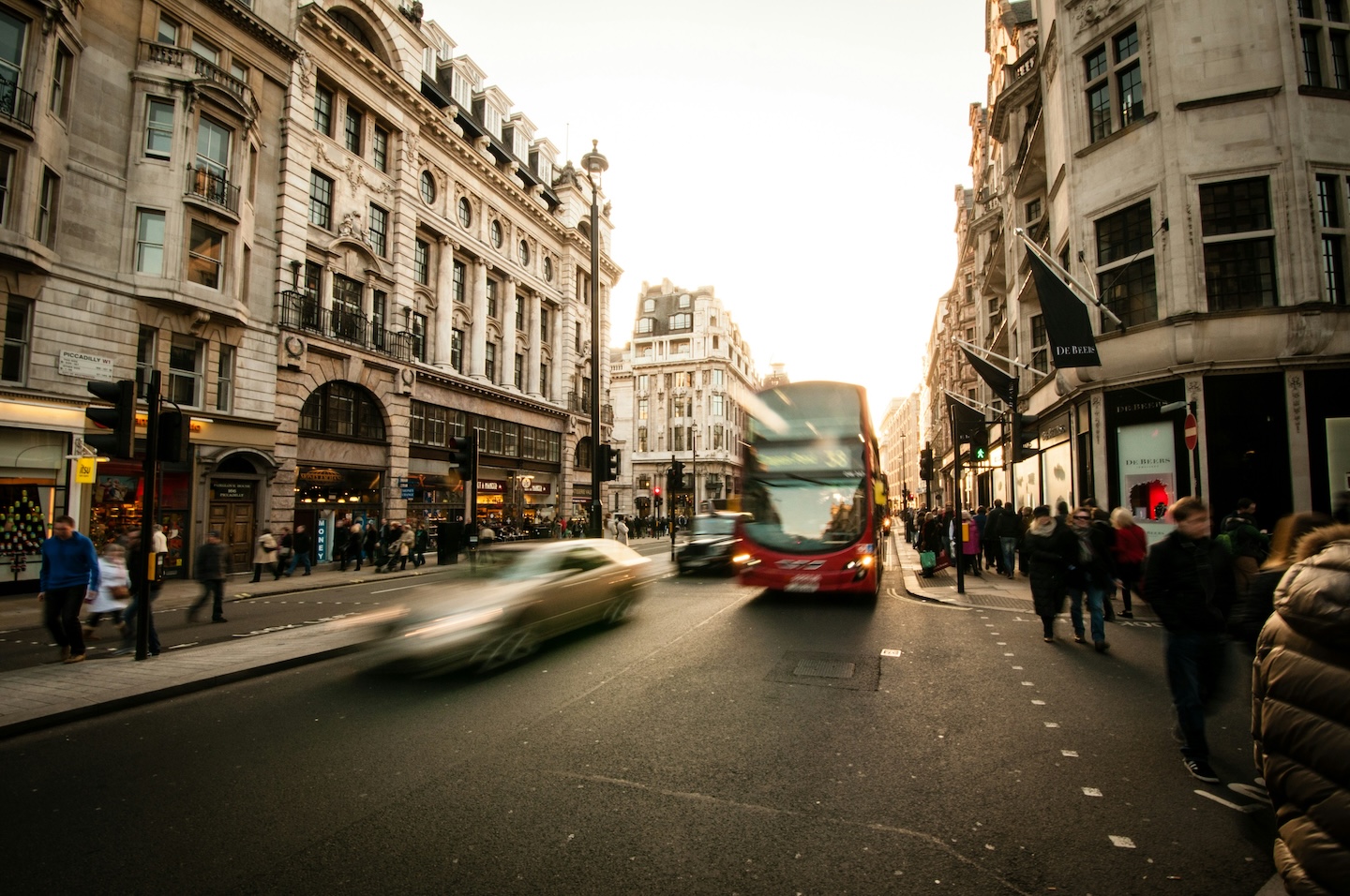Image provided by Urban Vintage via Unsplash.
TL;DR: To combat dangerous levels of air pollution, cities worldwide are implementing Low Emission Zones (LEZs), Ultra Low Emission Zones (ULEZs), and congestion pricing. These zones restrict high-polluting vehicles, encourage sustainable transportation, and improve air quality. Cities like Sofia, Warsaw, London, and New York are seeing measurable benefits, including reduced nitrogen dioxide (NO2) and particulate matter (PM2.5), better traffic flow, and improved public health outcomes. Effective LEZs require strong governance, funding, community engagement, enforcement tools, and complementary programs such as public transit investment.
Air pollution is considered one of, if not the largest, environmental threats to human health worldwide, causing roughly 8.1 million premature deaths every year. Crowded cities are often hotspots of air pollution, with 41% of cities suffering air pollution 7 times higher than the World Health Organization’s recommendation. Fortunately, many cities are addressing this issue through low-emission zones and congestion pricing.
What are low-emission zones and ultra-low emission zones?
Low Emission Zones (LEZs) are designated areas in cities where access by certain vehicles is restricted or discouraged based on certain emission standards to improve air quality and public health. LEZs strive to promote cleaner forms of transportation such as cycling, walking, and public transport, and are often implemented alongside other measures that encourage sustainability.
Low-emission zones are a type of urban vehicle access regulation (UVAR). It is common to see LEZs implemented with other UVAR options, such as congestion charging, and spatial changes such as the addition of bike lanes.
The first low-emission zone was implemented in Stockholm, Sweden, in 1996. A growing number of cities today implement LEZs. In 2022, Europe alone had over 320 low-emission zones, 40% more than it had in 2019.
Over time, LEZs usually implement stricter requirements to further improve air quality. This can lead to ultra-low emission zones (ULEZs) and zero emission zones (ZEZs), where either very little or no air pollution from vehicles is permitted.
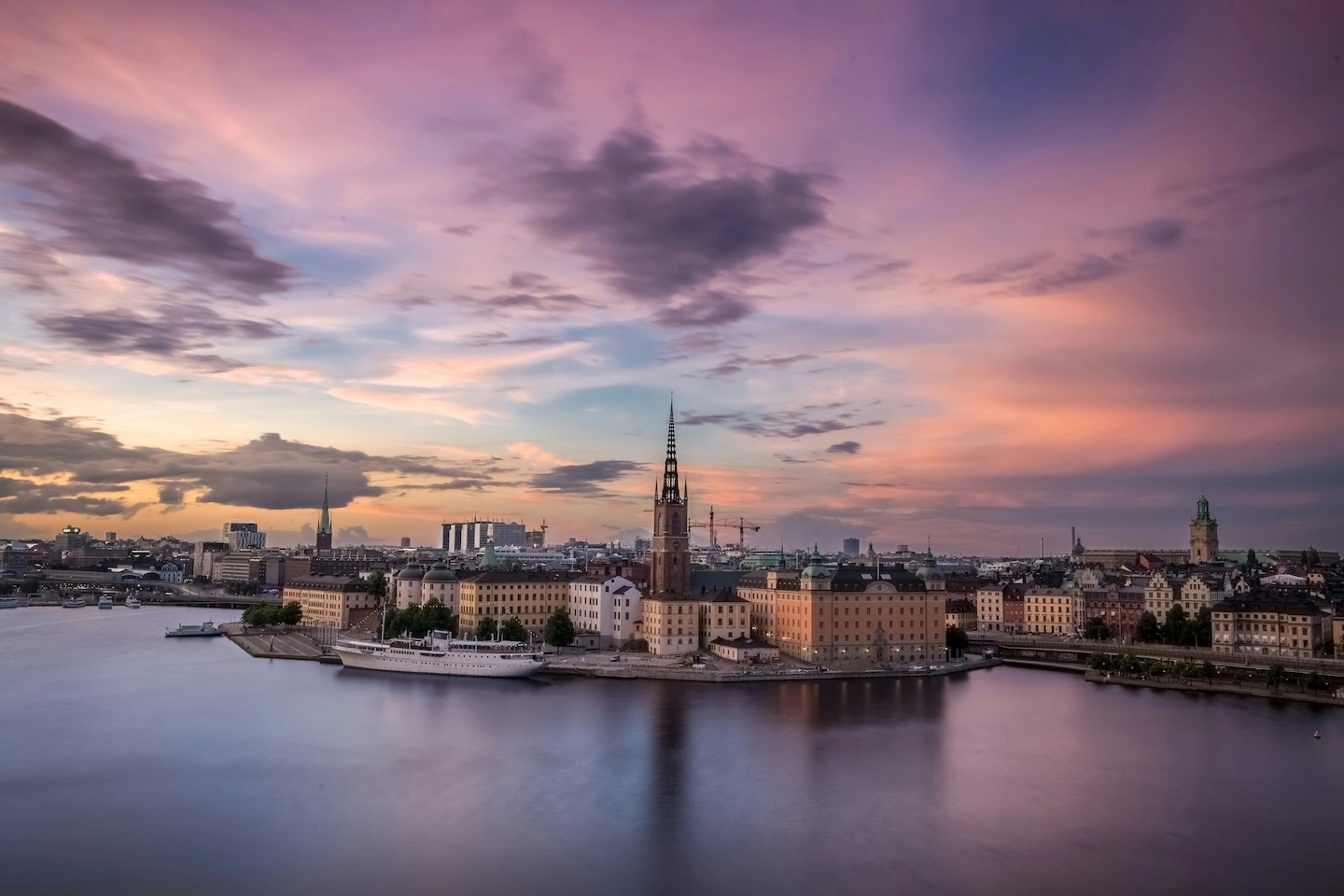
Best practices for implementing LEZ, ULEZ, and ZEZ
Low-emission zones should ideally be implemented in urban areas with the most ambient air pollution, which are also easily enforceable along road boundaries. Over time, the LEZ area typically expands as the population adapts to the change. Exceptions should be made for certain vehicles, such as ambulances, and those that belong to people with mobility issues or residents of the LEZ.
LEZs are most successful when they have the following characteristics:
- A clear governance and financial framework
- Early and ongoing communication with the public and stakeholders in the design and implementation phases
- Coherent plan with a clear and transparent timeline
- Alternative options and complementary programs that are affordable and accessible.
LEZs work best when they have the proper support, funding, and power to implement and enforce regulations. This requires strategic planning, communication, and funding. Stakeholders, community groups, and government agencies all have a role to play.
Incentives can be just as important as disincentives; better public transportation, walking, and cycling infrastructure, subsidies, and older vehicle scrapping schemes can all allow for an easier transition to LEZs.

The positive outcomes of low and ultra-low emission zones
Successful LEZs improve urban air quality. They lower carbon dioxide (CO2) emissions, other greenhouse gas emissions, and nitrogen oxides (NOx) emissions, including nitrogen dioxide (NO2) and nitric oxide (NO). Lastly, they also reduce particulate matter (PM2.5) air pollution.
These air pollutants are harmful to human health. By reducing them, LEZs improve life expectancy, mitigate asthma, bronchitis, and heart disease, reduce hospital admissions, and decrease related healthcare costs.
LEZ in action: Examples around the world
LEZ in Sofia, Bulgaria
In December 2023, Sofia established the first low-emission zone in Eastern Europe. Sofia, Bulgaria, is one of the most polluted cities in Europe, regularly exceeding the air pollution standards of the World Health Organization (WHO) and the European Union (EU). Roughly 15,000 premature deaths occur annually in Sofia due to air pollution, a rate 2.7 times higher than the EU’s average.
Fortunately, an ongoing LEZ project is helping to reduce harmful emissions of NOx and PM in Sofia in tandem with restrictions on solid fuel burning, since traffic and domestic heating are the city’s main sources of air pollution. Sofia is enforcing the vehicular LEZ with cameras equipped with automatic number plate recognition (ANPR) technology.
Many European countries use Euro standards of vehicles ranging from Euro 1 to Euro 7. These standards correspond to different types of emission standards that vehicles were built to adhere to. Each successive Euro standard is stricter than the last. Older vehicles adhere to more lenient standards and therefore pollute more than newer ones. The standards allow older vehicles to be slowly phased out in select areas over time. Sofia restricts certain vehicles from entering the LEZ based on these standards.
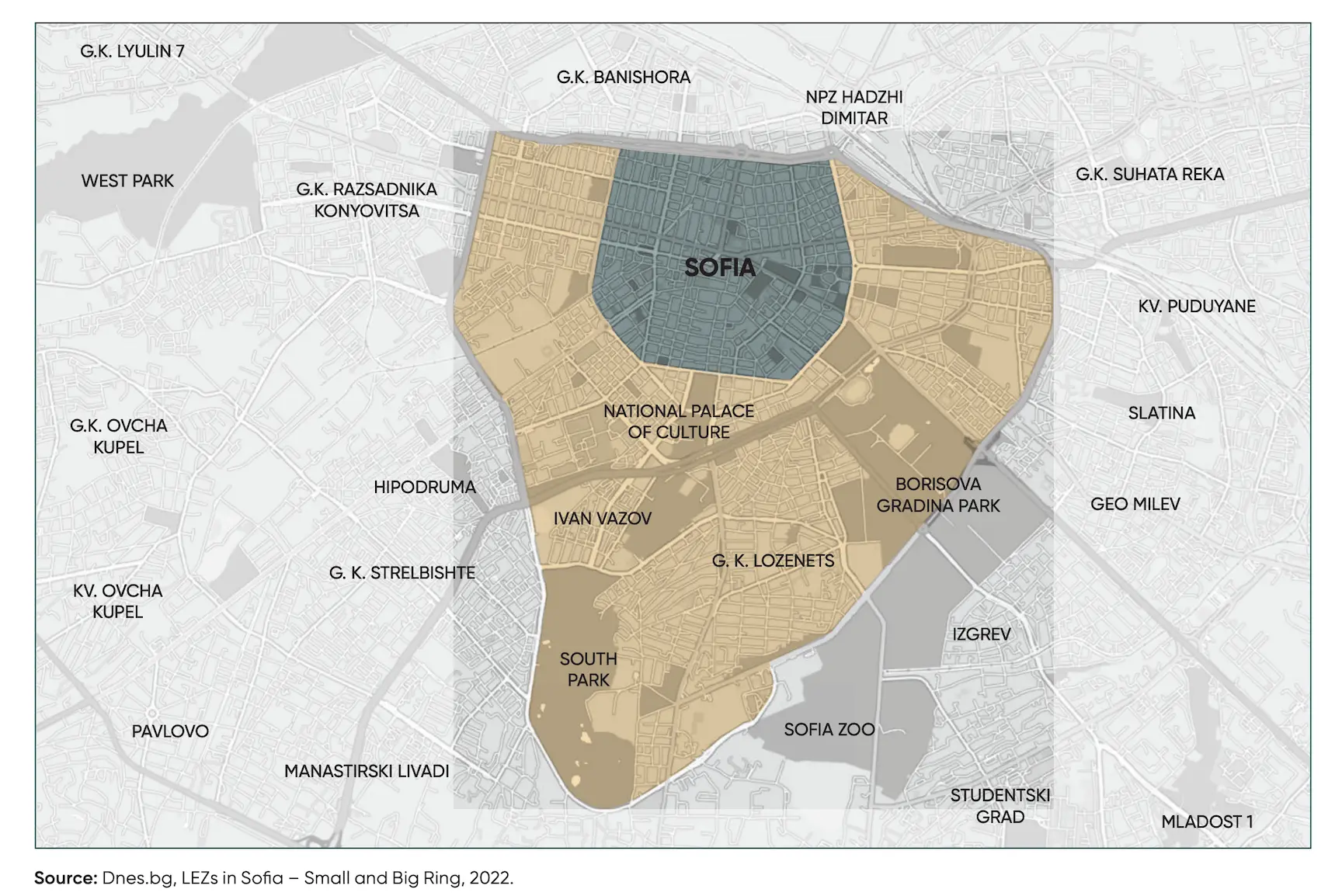
Unfortunately, Sofia’s LEZ has faced some difficulties. A lack of adequate alternative transport options has increased the vehicle emissions in areas bordering the low-emission zone. Sofia also lacks enough ambient air quality monitors to track emission reductions. However, even with these setbacks, the LEZ is still projected to reduce NOx levels by 37% and PM emissions from passenger vehicles by 56%.
LEZ in Warsaw, Poland
Poland has a high vehicle ownership rate with a high-polluting, aging vehicle fleet. However, Poland’s Air Protection Program aims to mitigate this problem. Warsaw, Poland, implemented its first low-emission zone in July 2024, known as the ‘Clean Transport Zone’ (SCT). This is a type of low-emission zone, limiting access to vehicles if they do not meet specific pollution standards. This restriction applies to cars that run on gasoline, diesel, hybrid engines, or Liquefied Petroleum Gas (LPG).
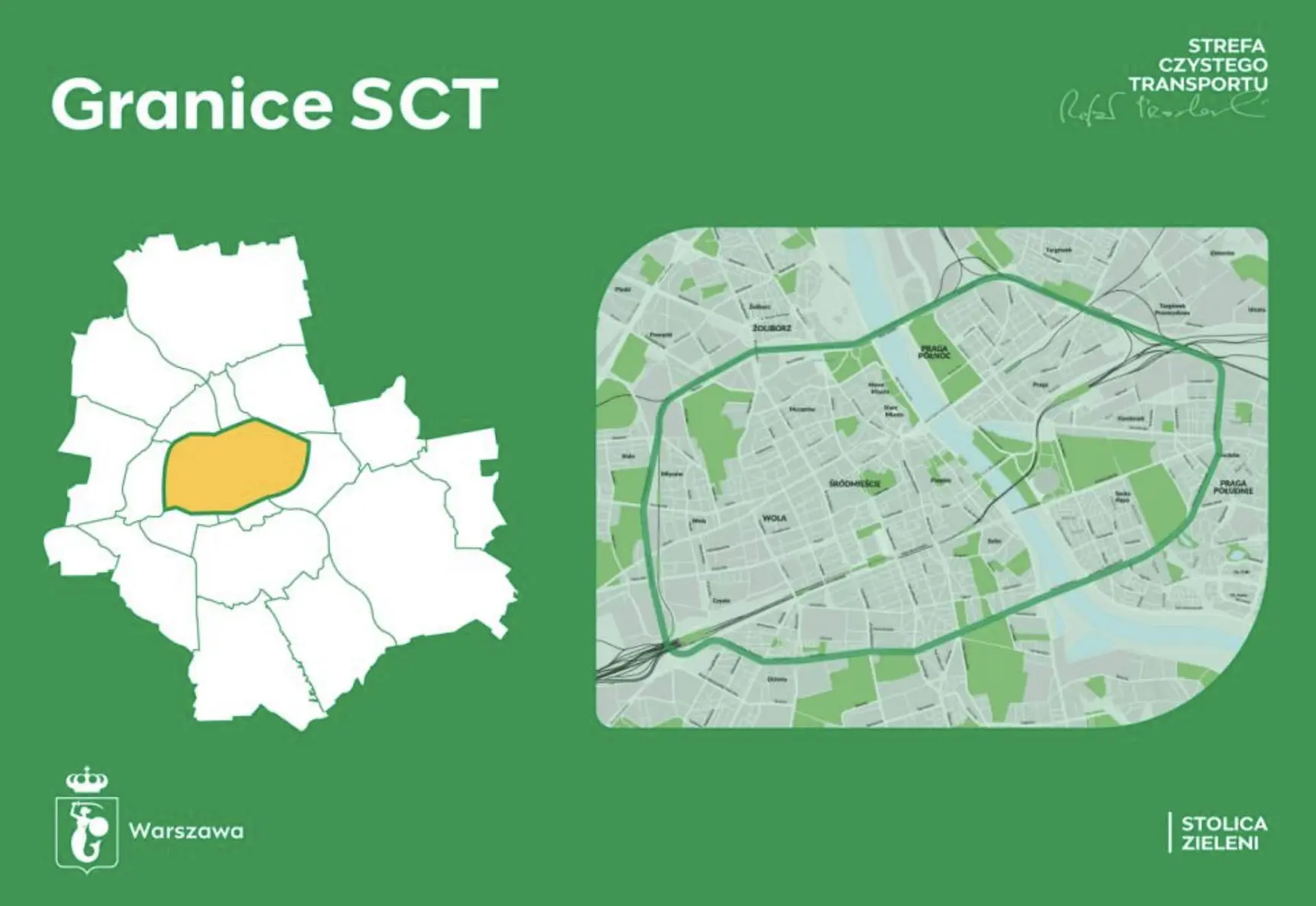
Warsaw’s SCT will be rolled out in five stages. Every two years over an eight-year period, stricter emission limits will be introduced, beginning with restricting access to petrol vehicles below Euro 2 standards and diesel vehicles below Euro 4. Exemptions apply to select groups, such as residents over the age of 70.
The SCT program will track pollution progress using real-time data from environmental monitors. By accurately tracking pollution trends before and after the implementation of each stage, Warsaw can better understand how effective these measures are. This also enables better project transparency. Despite some initial political opposition, Warsaw’s successful public campaigns and project transparency effectively rallied public support.
LEZ and ULEZ in London, United Kingdom
A low-emission zone has been in place in London, UK, since 2008. In addition to the LEZ, London also has an ultra-low emission zone, which was first implemented in April 2019. Before the ULEZ zone, a study by Imperial College London (which Clarity partners with on the Breathe London Communities air quality monitoring program) found that air pollution led to approximately 4,000 premature deaths in 2019 alone. The British Heart Foundation also found that living in certain areas of the city can increase the risk of early death by the equivalent of smoking 150 cigarettes a year.
London’s ULEZ compliant standards include Euro 3 for motorbikes, Euro 4 for petrol vehicles, and Euro 6 for diesel and heavy vehicles, with exceptions granted to certain groups, such as disabled individuals. Vehicles that do not meet the standards must pay a fine. Cameras equipped with automatic number plate recognition (ANPR) technology are used to enforce the program.
Fortunately, London has one of the densest air pollution monitoring networks in the world, with continuous monitoring data available to the public in 150 locations. This allows the city to have a better understanding of how its policies are impacting air quality.
The ULEZ works in tandem with London’s congestion charge zone, a 21km2 area within the city’s inner ring road. Vehicles that do not meet emission standards are imposed a daily charge of £17.50 upon entering this area. The congestion charge zone is higher than the ULEZ fine for most cars.
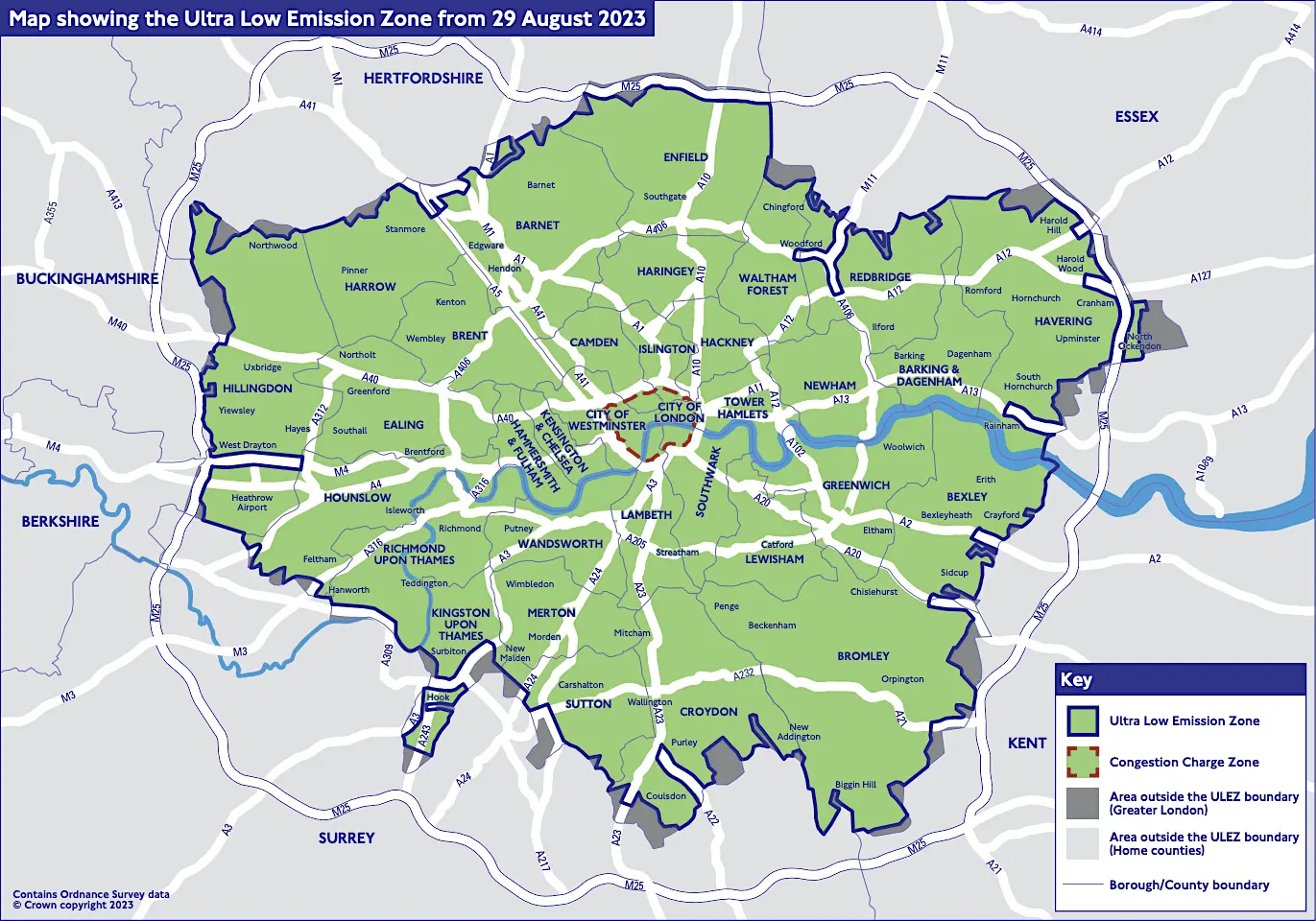
Since ULEZ’s implementation, 99% of all monitoring locations recorded a decrease in NO2 levels, with NO2 concentrations 27% lower across all of London, and 54% lower in central London. Since the 2023 ULEZ expansion, particulate matter (PM2.5) exhaust emissions from cars and vans in outer London are estimated to be 31% lower. London’s ULEZ has likewise led to many positive outcomes for public health.
Congestion pricing in New York, United States
Ground-level ozone and PM2.5 air pollutants cause roughly 2,400 deaths per year in New York City. While New York does not have a traditional low-emission zone, it does have other measures that help regulate air pollution, which will protect public health.
In January 2025, New York became the first United States city to implement a congestion pricing zone. The congestion pricing zone requires drivers to pay a fee to drive through a certain area of New York. The cost increases for larger vehicles and during peak traffic times. Low-income residents are eligible for a discount, while ambulances, buses, and people with disabilities are exempt from the fee.
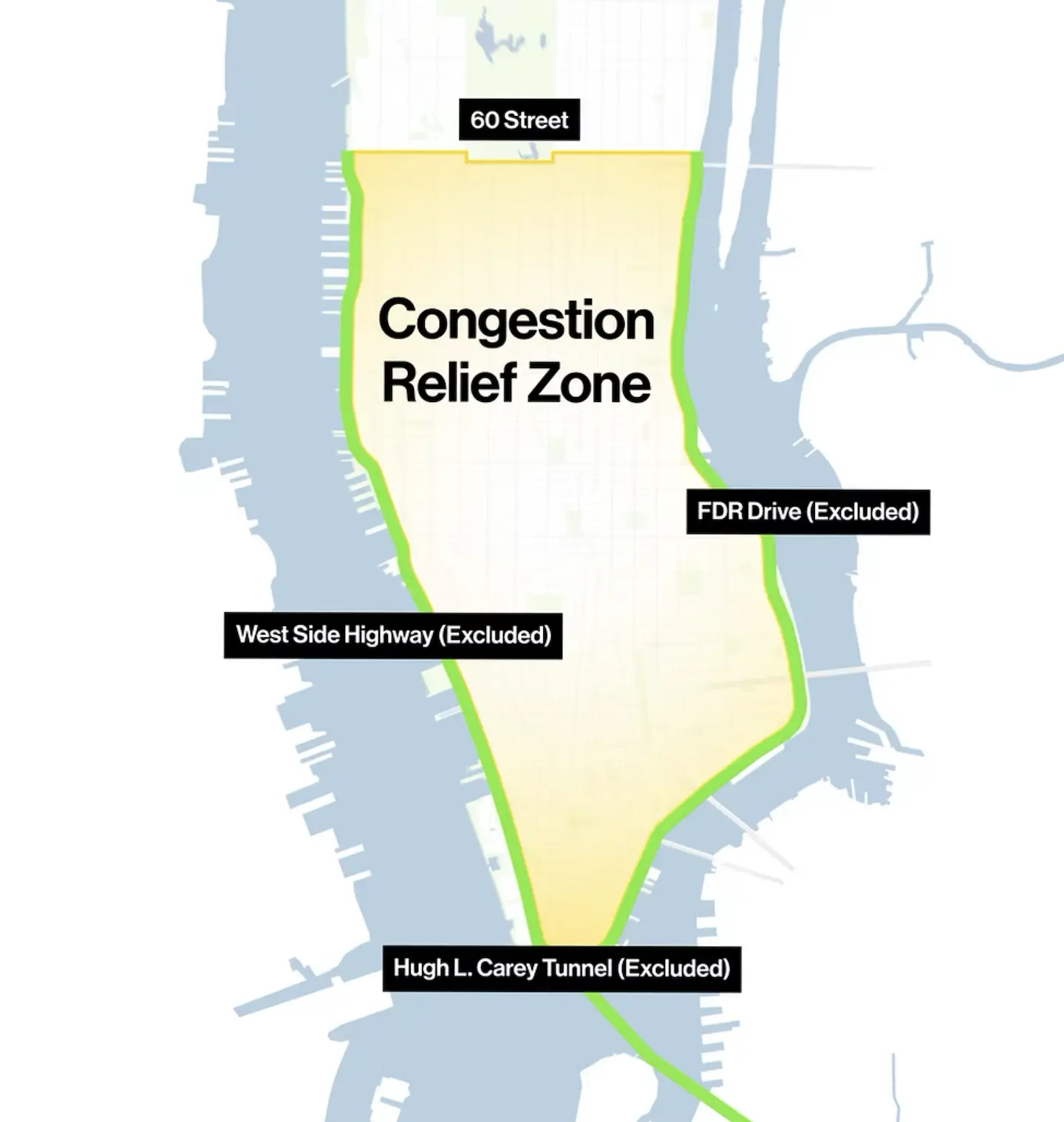
The congestion pricing aims to reduce traffic, mitigate air pollution, and promote public transportation. Within the first week alone, traffic in New York’s central business district fell by 7.5% with 273,000 fewer cars entering the zone. This improves bus travel times and makes roads easier to navigate, which is particularly beneficial for emergency and high-priority vehicles.
Despite some political opposition from the Federal government, this congestion pricing remains in effect. The program’s success includes generating $48 million in its first month alone, money that will be put to use improving New York’s public transportation. As of July, the congestion pricing zone has seen 11% fewer vehicles entering the zone per day. In June, a report found that traffic delays in Manhattan are 25% lower due to congestion pricing, resulting in fewer crashes, honking, and delayed commutes. While the scheme is still in its early days, New York’s congestion pricing is expected to reduce air pollution and safeguard public health.
Looking Forward
Air pollution is a threat that needs to be addressed now. Fortunately, Sofia, Warsaw, London, New York, and many other cities around the world are taking steps to improve air quality and protect public health. Learn how you can support air quality initiatives with ambient air pollution monitoring by partnering with Clarity Movement.
